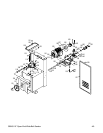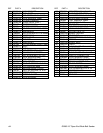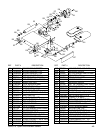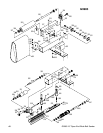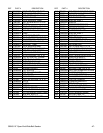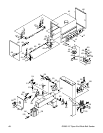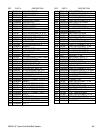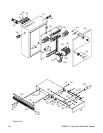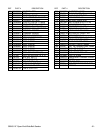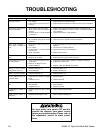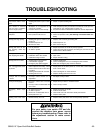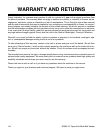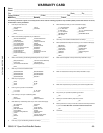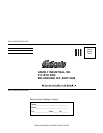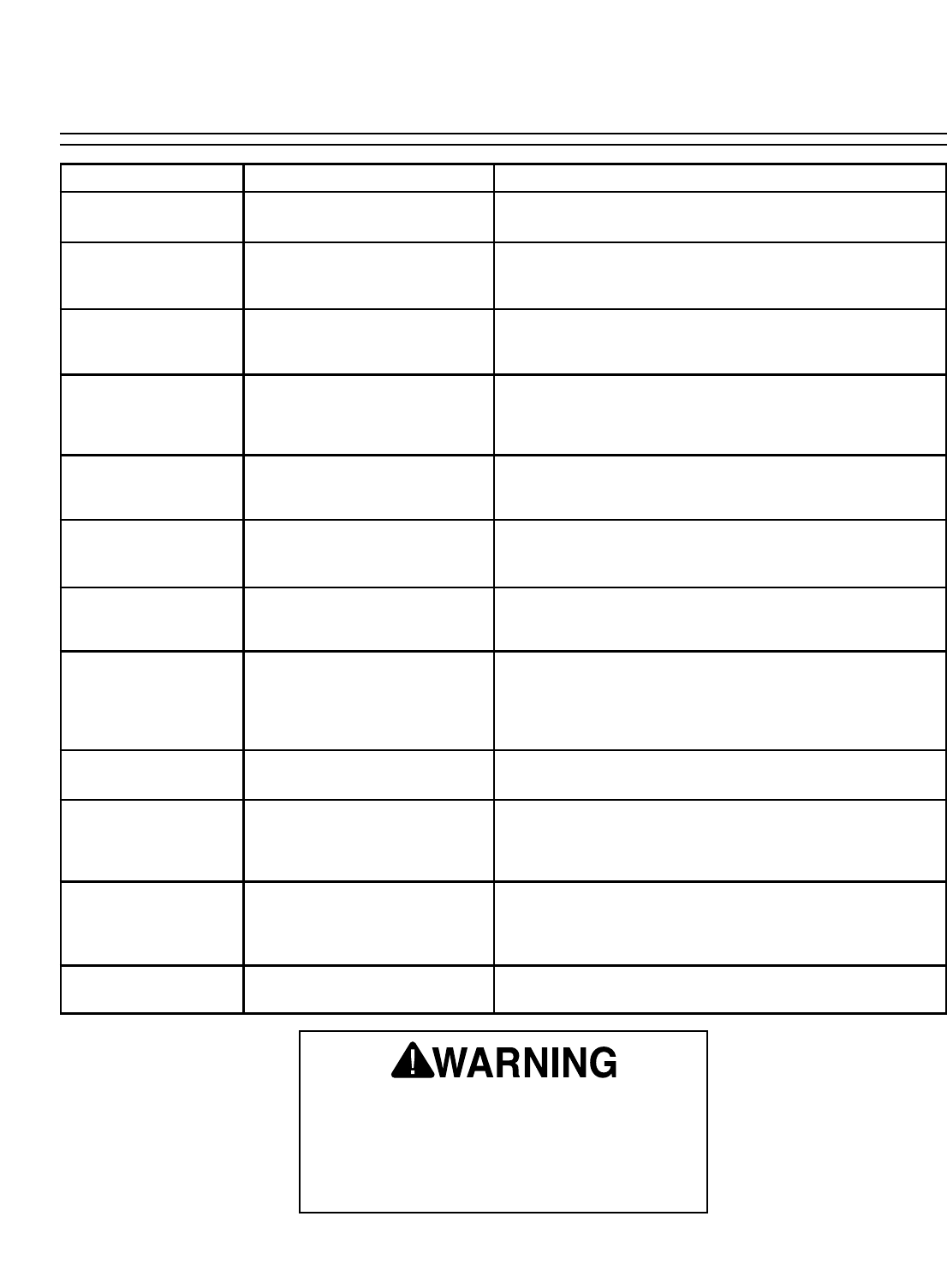
G9983 15" Open-End Wide-Belt Sander -53-
For your safety, turn switch OFF and dis-
connect the machine from power source
before any troubleshooting. Please refer to
the adjustment section to make correc-
tions.
TROUBLESHOOTING
SYMPTOM
Lines across width of work-
piece.
More material is removed
from the end of workpiece
than the length (snipe).
Glossy spots or streaks on
workpiece.
Sanding belt clogs quickly.
Sanding belt does not ten-
sion correctly; rollers slip
under belt.
Sanding belt runs off to one
side, stopping the sander.
Sanding belt will not start.
Poor, non-aggressive sand-
ing results.
Conveyor belt not tracking
in center.
Conveyor belt slipping.
Emergency brake stops
slow.
Grinding noise when brak-
ing.
POSSIBLE CAUSE
1. Sanding belt seam is open or dam-
aged.
1. Workpiece is not supported as it
comes out of sander.
2. Pressure rollers not set correctly.
1. Worn sanding belt.
2. Rear pressure roller too low.
1. Sanding belt grit too small for par-
ticular job.
2. Excessive depth of cut.
3. Wood is too moist.
1. Low air pressure.
2. Air leaks in system.
1. Air eye fork clogged.
2. Oscillation return valve closed.
3. Oscillation timing incorrect.
1. Sanding belt is not tensioned.
2. Limit switches engaged.
3. Emergency stop plate engaged.
1. Platen adjusted incorrectly, above
bottom surface level of lower sand-
ing rollers.
2. Sanding belt loaded with sawdust.
3. Sanding belt worn out.
1. Conveyor rollers moved out of
adjustment.
1. Conveyor rollers have incorrect
tension.
2. Conveyor rollers contaminated with
dirt or dust.
1. Air pressure incorrect.
2. Air leak in system.
3. Brake rotor contaminated with oil.
4. Brake pads worn out.
1. Brakes severely worn out.
CORRECTIVE ACTION
1. Repair or replace sanding belt.
1. Hold workpiece up with your hands as it comes out, or set up an out-
feed table for your workpiece after it comes out.
2. Set pressure rollers as described in Section 8: Service Adjustments.
1. Replace sanding belt.
2. Raise rear pressure roller. (See warning in Pressure Roller sec-
tion!)
1. Replace with a coarser grit sanding belt.
2. Reduce depth of cut.
3. Allow wood to dry out.
1. Adjust air pressure to 75 PSI at primary regulator.
2. Inspect all hoses and connections for leaking air; use water on sus-
pected area to detect bubbles.
1. Clean the intake hole on the air eye fork.
2. Open valve.
3. Adjust oscillation timing.
1. Tension sanding belt.
2. Center sanding belt so it is not touching the limit switches.
3. Make sure emergency stop switch is released.
1. Adjust platen on the same plane as, or lower than, bottom surface
level of lower rollers.
2. Clean sanding belt to unload sawdust.
3. Replace sanding belt with a new one.
1. Re-adjust conveyor rollers.
1. Adjust conveyor rollers to increase tension.
2. Clean conveyor rollers.
1. Adjust air pressure to 75 PSI.
2. Find and fix air leaks.
3. Clean brake rotor with automotive brake parts cleaner.
4. Replace brake pads.
1. Replace brake pads, have rotor turned (possibly replaced).



